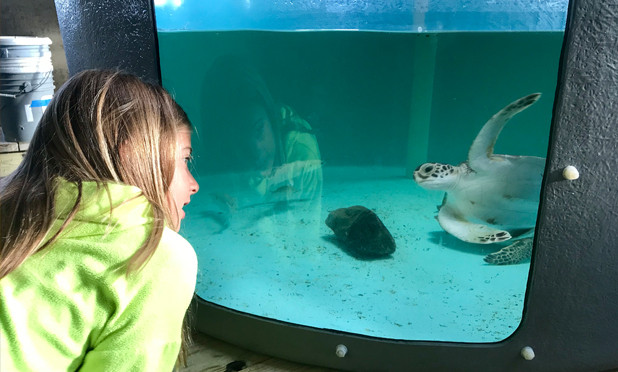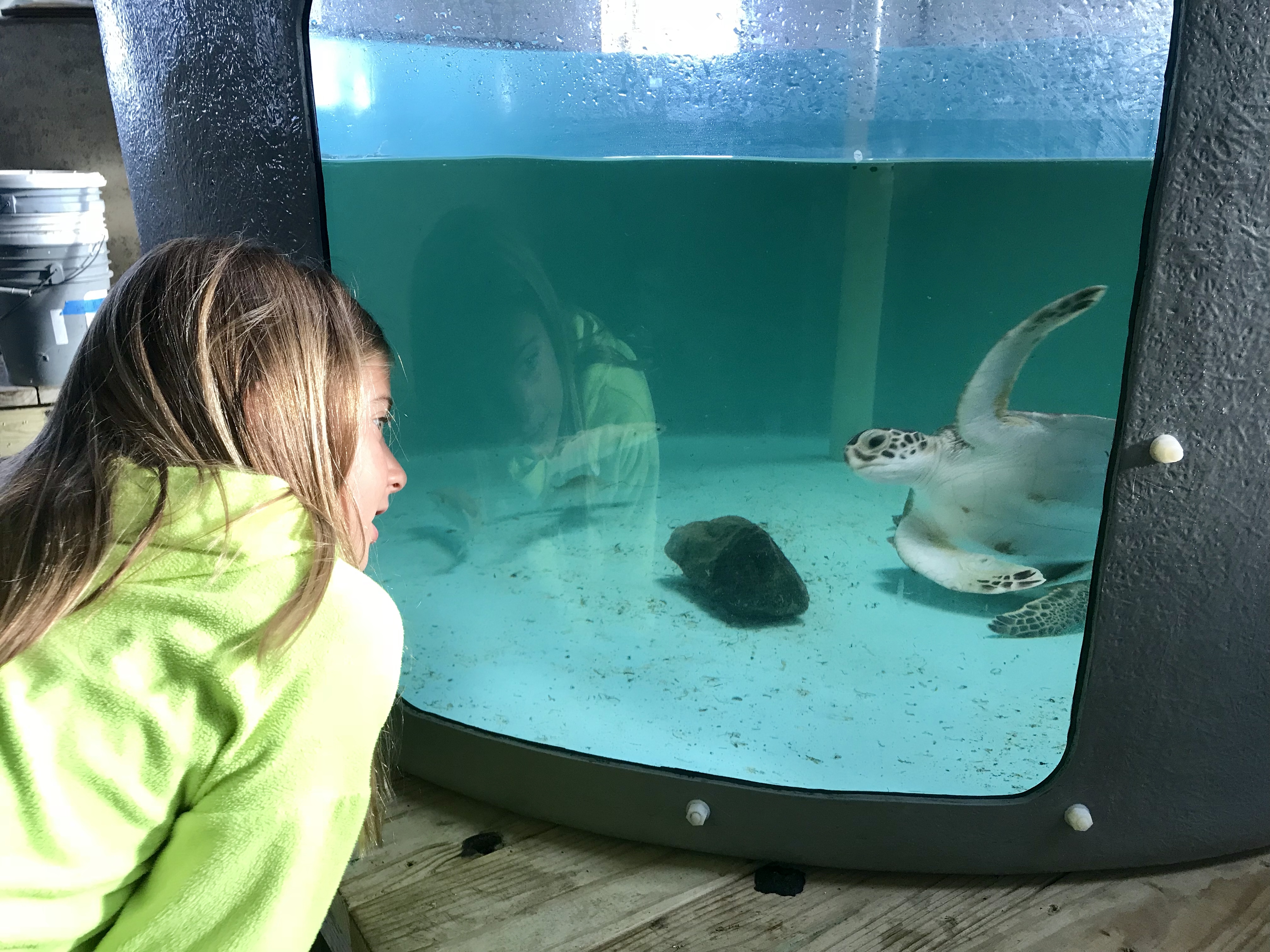The Amos Rehabilitation Keep (ARK) at The University of Texas Marine Science Institute has been rehabilitating and caring for injured birds and marine animals since 1982, and soon they will be opening their doors to the public. The organization recently completed a hurricane reconstruction funded by the National Oceanic and Atmospheric Administration (Continuing Appropriations Act, 2018 and Supplemental Appropriations for Disaster Relief Requirements Act, 2017), as well as a host of upgrades that were funded by the Coastal Bend Bays & Estuaries Program (CBBEP) to facilitate public access. The enhancements include a new raptor enclosure, elevated decking around a sea turtle pool for public viewing, and walking paths with interpretive signage.
Guided tours of the ARK will be available starting August 11th on Wednesday and Friday at 10 a.m. by reservation for a nominal fee. Tours are limited to 15-people per tour. [Tours are now offered also on Saturday.]
Interested participants can register at: https://utmsi.utexas.edu/visit/registration
In the past, access to the ARK was restricted to prevent rescued animals from imprinting on humans before being released, but a new layout and new facilities separates the releasable animals from non-releasable, and it's those non-releasable animals that will become ambassadors for the ARK. "This project is one of the most significant the ARK has ever taken on, it will change the future of the organization," said Jace Tunnell, Director of the Mission-Aransas National Estuarine Research Reserve (NERR), the group that manages the ARK. "Now not only are we a rehabilitation facility, but also an educational hub for demonstrating the importance of these animals and their habitats, and opening dialogue about how they got here."
How they got there, that's another story. Many of the permanent residents (non-releasable animals) are there from non-natural causes like boat and vehicle strikes, and entanglement from discarded fishing tackle or other marine debris. Allowing the public to see first-hand the result of non-natural injuries such as these, and what it takes to care for these animals should be a pretty impactful experience. "It is great that the NERR decided to seek funds to facilitate public access to such a hidden gem among the University's campus in Port Aransas," said Jake Herring, Director of Land Conservation & Stewardship for the CBBEP. "These improvements will really shine a spotlight on all the untold work of the ARK, and what it takes to rescue and care for avian and marine animals that become injured and are unable to heal on their own."
Touring the ARK, you can expect to see sea turtles, sea birds, and raptor ambassadors, as well as interpretive signage focusing on the importance of marine life and their habitats. The University of Texas Marine Science Institute Patton Education Center is still closed to the public due to damage from Hurricane Harvey, but the Wetlands Education Center trail adjacent to the ARK is available for guided tours on Tuesdays and Thursdays at 9 a.m.
For more information about the ARK visit https://utmsi.utexas.edu/about/facilities/ark and to learn more about other CBBEP initiatives visit www.cbbep.org










